|
In-fibre Bragg gratings are sensor elements which are photo-written into optical fibre using intense
ultra-violet laser beams and have the potential for the measurement of strain/deformation and
temperature with applications reported including monitoring of highways, bridges, aerospace components
and in chemical and biological sensors. The development of a fiber Bragg grating (FBG) measuring system
plays a significant role in monitoring and recording the actual seismic responses of underground structures,
rock mass and bridges etc.
The basic principle of a fiber Bragg grating (FBG)-based sensor system lies in the monitoring
of the wavelength shift of the returned Bragg-signal, as a function of the measurand (e.g. strain,
temperature and force). The Bragg wavelength is related to the refractive index of the material and
the grating pitch. Sensor systems involving such gratings usually work by injecting light from a
spectrally broadband source into the fiber, with the result that the grating reflects a narrow spectral
component at the Bragg wavelength, or in transmission this component is missing from the observed
spectrum. Fig.1 shows this simply and schematiclly.
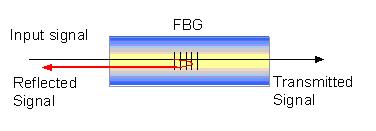
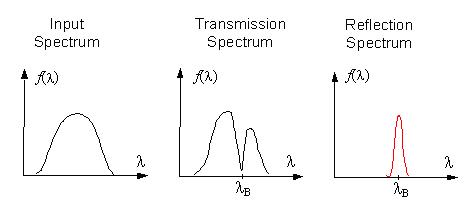
Fig. 1 Funktional principle of a fiber optic Bragg grating
Fig.2 shows an example of a fibre Bragg grating based sensor system for dynamic
strain measurement. The sensor-head consists of a glassfibre reinforced polymer (GRP) rockbolt in
which the grating is glued by epoxy resin. A 3dBm distributed feedback (DFB) laser, with tunable
wavelength in the range from 1548.75 nm to 1551.25 nm, sends an optical signal at an optimised
wavelength to the fibre Bragg grating through a fibre optical circulator. A part of the optical
signal is reflected from the Bragg grating, goes back through the circulator to a photodetector,
and is converted into an electrical signal. The signal is amplified, filtered and then sampled with
an oscilloscope. Finally, the sampled signal is processed in a PC system.
The intensity of the reflected optical signal is a function of the Bragg grating wavelength that relates to the
applied strain on the fibre Bragg grating. Therefore, the dynamic strain can be derived from the
intensity change measurement as function of the wavelength of the reflected optical signal.
This measuring system has a powerful laser source with tuneable and programmable wavelength,
so that the system sensitivity can easily be improved by optimizing the laser wavelength.
Furthermore, the wavelength sensitivity can be directly determined by using the dc photovoltage
measurement and the wavelength change of the laser source without any extra calibration.
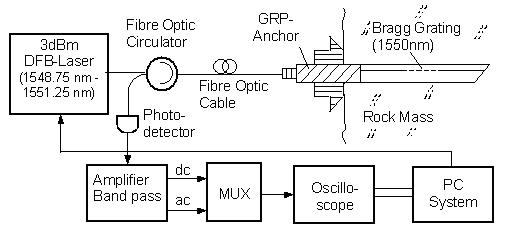
Fig.2 Measuring system of dynamic strain with a fiber optic
Bragg grating sensor
(FBG-rockbolt is a patent of the
German Research Center of Earth Science GFZ in Potsdam)
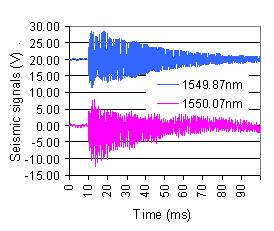
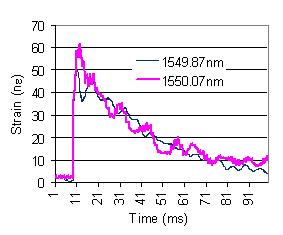
Fig.3 Seismic signal detected with the Bragg grating sensor
system and calculated strain
This technique can be applied to the detection of dynamic strain variations down to 10
-9 in underground rock mass excavations and to the monitoring of bridge structures etc.
For further information please contact with
the German Research Center of Earth Science GFZ in Potsdam
You can also contact with the ChenYang Technologies
|